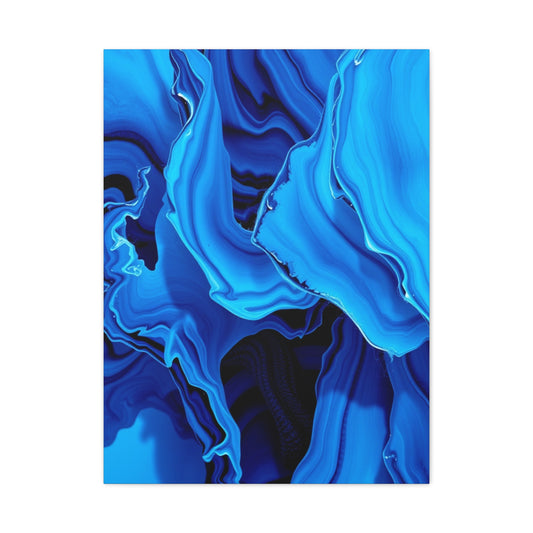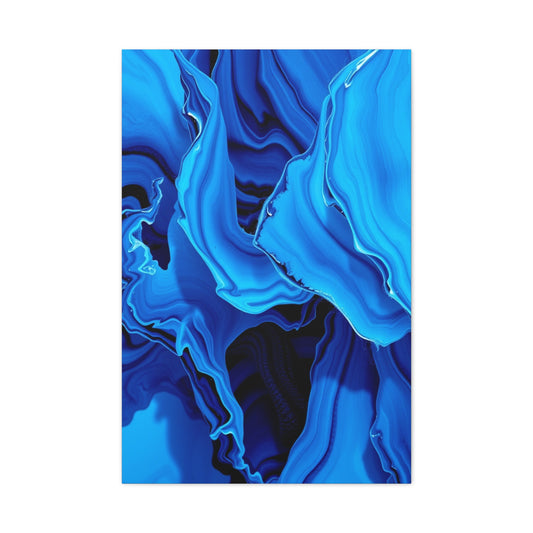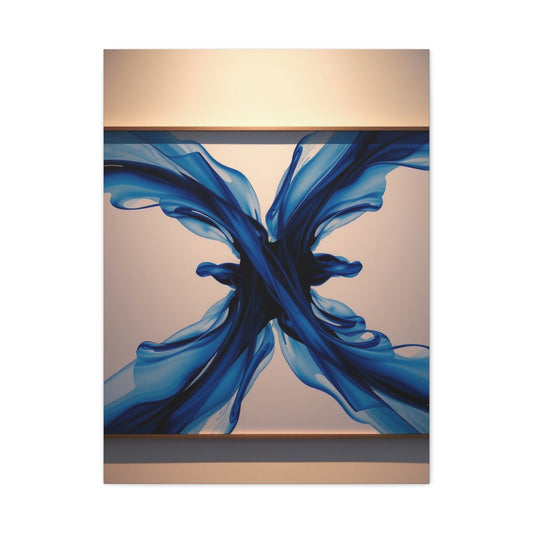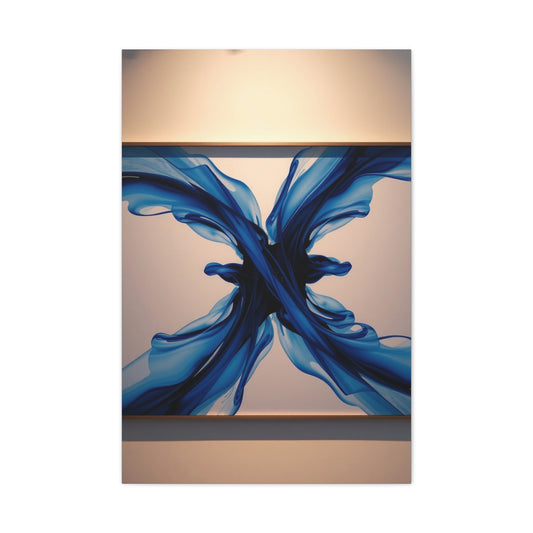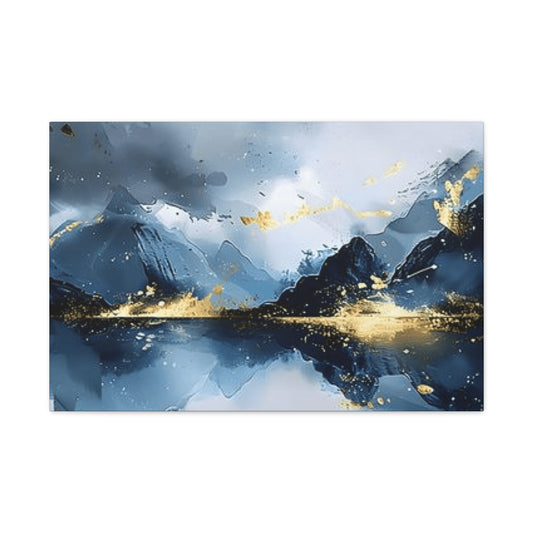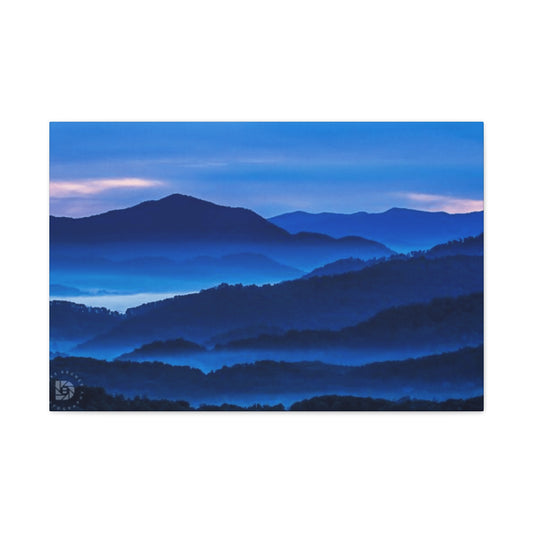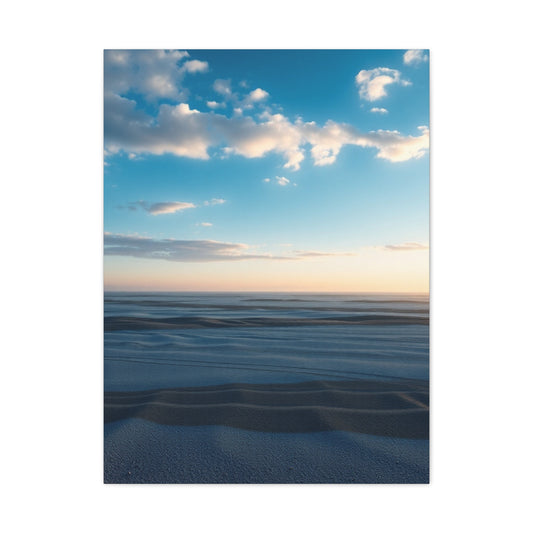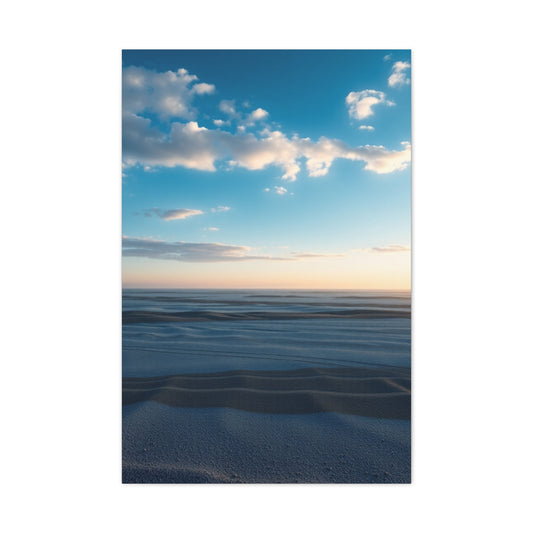The Historical Shift from Wood Panels to Canvas: A Revolution in Artistic Practice
Throughout the history of art, the choice of surface has played a vital role in shaping artistic expression. In earlier centuries, particularly during the Middle Ages and early Renaissance, wood panels were the preferred substrate for painting. Artists like Giotto and Jan van Eyck crafted their masterpieces on painstakingly prepared wooden boards, creating enduring icons of European art. These wooden supports offered a solid, smooth surface ideal for the intricate layering techniques of tempera and early oil painting. However, they came with significant limitations, notably their weight, fragility, and susceptibility to environmental changes such as humidity, which often led to warping, splitting, and cracking over time.
A major turning point came during the Renaissance, particularly in Venice, a bustling hub of commerce and innovation. Here, artists began experimenting with canvas as a lighter, more versatile alternative to wood. This innovation proved to be transformative. Canvas, stretched over wooden frames or "strainers," introduced a new kind of flexibility and freedom for artists. Suddenly, larger and more dynamic compositions became feasible, and transporting completed works became considerably easier. This revolution wasn’t only practical but also aesthetic, as the surface of the canvas offered a different response to paint, allowing for more expressive brushwork and a sense of immediacy.
The early canvases used in Renaissance Italy were fashioned from sturdy sailcloth, typically made of hemp robust, fibrous plant material well-suited to maritime applications. The word "canvas" itself is rooted in the Latin "cannabis," a direct nod to its hempen origins. These hemp canvases carried the rugged resilience of the sea into the studio, offering a tough yet responsive surface for oil paint. As the practice evolved, artists began favoring linen, which provided a smoother texture and more refined handling characteristics. Linen remained the gold standard for centuries, especially in the studios of European masters, prized for its strength and longevity.
With industrial advancements in the 19th and 20th centuries, cotton canvas emerged as a cost-effective alternative, quickly becoming popular among artists worldwide. Although less durable than linen, cotton offered a consistent weave and affordability that appealed to a wide range of creators. This democratization of materials meant that aspiring artists, students, and professionals alike could access quality surfaces for their creative endeavors. Cotton duck, the most common form, features a tight weave that suits both oil and acrylic painting.
As art movements diversified, so did the needs and preferences of artists. The Impressionists, with their desire to paint outdoors and capture fleeting moments of light, found the lightweight portability of canvas ideal for plein air painting. Meanwhile, abstract expressionists valued the raw, unstretched canvas for its responsiveness to staining and gestural techniques. In every era, canvas has proven to be a medium that adapts, evolves, and ultimately empowers the artist’s vision.
Related Catagories:
Material Matters: Understanding Fabric Types, Weaves, and Surface Qualities
In today's art landscape, the variety of canvas options available is more extensive than ever before. From raw rolls to pre-stretched frames, artists can select surfaces tailored to their creative approach and working environment. The three primary materialshemp, linen, and cotton, offer unique benefits and challenges. Hemp, though less common now, retains historical relevance and is sometimes revived by artists seeking sustainable or traditional materials. Linen remains a top choice for professionals due to its superior strength, fine texture, and resistance to environmental changes. It provides a luxurious surface that responds beautifully to both oils and acrylics, maintaining integrity over decades.
Cotton canvas, particularly cotton duck, is widely available and comes in various weights, allowing artists to choose a thickness that suits their medium and technique. Lighter weights are ideal for smaller studies and sketches, while heavier canvases offer greater support for large-scale works and more vigorous applications of paint. Cotton's affordability also makes it popular in academic settings and among emerging artists exploring their style.
The weave of a canvas fabric significantly influences its painting surface. A fine weave presents a smooth texture, allowing for detailed work and subtle transitions. This is often preferred for portraiture or delicate glazing techniques. On the other hand, a rougher weave offers more tooth, which is ideal for impasto or expressive brushstrokes, adding a tactile dimension to the finished work. The weave not only affects how the brush moves across the surface but also how the paint is absorbed and retained.
Priming plays a crucial role in preparing the canvas. Unprimed canvas is absorbent and can cause oil paints to deteriorate over time if applied directly. To prevent this, artists use a groundmost commonly gessoto seal the surface. Traditional gesso, made from rabbit-skin glue and chalk, is still used by some purists for its rigidity and adherence to classical techniques. More commonly, acrylic gesso is applied in multiple coats, creating a flexible, white surface that bonds well with both oil and acrylic paints.
Some artists choose to stretch and prime their own canvases, allowing them full control over every aspect of the surfacefrom the tension of the fabric to the number of gesso layers applied. This process, while time-consuming, results in a personalized substrate that responds precisely to the artist’s touch. Others prefer the convenience of pre-stretched canvases, which are readily available in standard sizes and primed to industry standards, offering a ready-to-paint solution for those eager to dive into their work without preparation.
Canvas panels and boards are another popular option, especially for travel, studies, or fieldwork. These lightweight alternatives provide a rigid surface that can withstand rough handling and varying weather conditions, making them ideal for outdoor painting. They also store easily and are often chosen by instructors and students for classroom settings.
The Artist’s Choice: Canvas as a Partner in Creative Expression
Selecting the right canvas is far more than a logistical decisionit is a deeply personal process that influences the trajectory of an artwork from conception to completion. The tactile feedback of the brush against the surface, the way pigments settle into the weave, and the degree of absorption all contribute to the visual and emotional impact of a painting. Every artist develops a relationship with their materials, and canvas is often the first element in this creative dialogue.
Different painting styles and techniques call for different surfaces. Artists who utilize glazing or blending may seek out smoother linens with fine priming to allow subtle tonal shifts and depth. Those who prefer alla prima or wet-on-wet approaches might opt for a slightly more absorbent cotton canvas that holds paint in place without immediate spreading. Abstract painters and mixed-media artists often experiment with raw or minimally primed surfaces to exploit staining effects, allowing color to bleed and fuse in unpredictable ways.
Modern materials offer unmatched flexibility. Acrylic primers, for instance, dry quickly and are compatible with both oil and acrylic paints, reducing preparation time. Colored groundssuch as gray, ochre, or even blackare increasingly used to influence the tonal structure of the composition from the first layer. Artists can also choose from a variety of textures, from ultra-smooth to coarse, depending on their vision.
For those working en plein air, the right canvas must balance portability with durability. Lightweight panels or pre-mounted sheets offer convenience without sacrificing quality. These materials allow artists to react quickly to changes in light, capturing atmospheric shifts and fleeting moments with immediacy. Meanwhile, studio artists often invest in large rolls of canvas to cut and stretch to custom dimensions, accommodating unconventional formats or expansive mural work.
Experimentation is essential. Many painters try a wide range of canvases before finding the one that aligns with their artistic rhythm and technique. The feel under the brush, the rate at which paint dries, and the degree to which texture is visible in the finished pieceall these factors influence not only how an artist paints, but also what they paint.
Ultimately, the selection of canvas is an extension of artistic identity. It reflects a painter’s method, preferences, and the emotional resonance they seek to create. Understanding the materiality of canvasfrom its historical journey to its modern incarnationsenriches the creative process and empowers artists to make informed, expressive choices. Whether painting a quiet portrait, a vibrant abstract, or a sweeping landscape, the canvas is more than a surface; it is a collaborator in the making of art.
Understanding Canvas Materials: The Foundation of Every Masterpiece
When embarking on the journey of painting, one of the most vital decisions an artist must make is the selection of canvas material. The surface upon which a painting is created plays a pivotal role not only in the aesthetic outcome but also in the longevity and handling of the artwork. While techniques and styles evolve, the choice of canvas remains a foundational element that determines the tactile interaction between brush and surface.
Traditionally, artists have leaned on two primary canvas materials: cotton and linen. Both have stood the test of time, yet they offer vastly different experiences. Cotton, often favored for its accessibility and versatility, is a go-to for beginners and professionals alike. Linen, on the other hand, holds a time-honored place in the art world, preferred by masters for its strength and historical authenticity.
Expanding beyond these staples, some contemporary artists have turned to alternative natural fibers such as jute and hemp. These materials introduce an earthy, textured surface that deviates from the smoother finishes offered by cotton and linen. Although less conventional, they bring a unique personality to the canvas that suits certain styles and experimental techniques. Jute, with its coarse weave and warm hue, adds a rustic touch to artworks and is appreciated by those who embrace texture and imperfection as part of their visual storytelling.
The selection of canvas material influences everything from the tension and stretchability to how paint absorbs and adheres. A canvas that feels lively beneath the brush can enhance expression, while a more rigid surface might challenge the artist but offer rewards in control and detail. Whether an artist seeks the forgiving nature of cotton or the regal bearing of linen, understanding the properties of each material is key to making an informed and creative choice.
Cotton and Its Variants: A Flexible and Accessible Choice for Modern Artists
Cotton canvas has cemented its role as the most commonly used material in contemporary painting. Within this category, cotton duck stands out for its tightly woven structure and reliable durability. Artists who appreciate a balance between cost-effectiveness and quality often gravitate toward cotton duck due to its consistent performance and ease of use.
Cotton duck is notably user-friendly when it comes to stretching and preparation. It readily conforms to stretcher bars and maintains tautness with minimal effort. This makes it especially appealing for those who prefer to prepare their own canvases or work on large surfaces. The texture of cotton duck offers a noticeable grain, contributing to the tactile experience of painting and allowing for a dynamic interplay with brushwork and paint application.
Unprimed cotton exhibits a natural, creamy color, creating a neutral backdrop that can influence the tone of a finished piece. Once primed, the color and finish of the canvas can vary significantly depending on the type of gesso or acrylic ground applied. Some manufacturers even employ a process known as back-coating, where the reverse side of the fabric is treated with a darker coating. This not only helps prevent light penetration from behind but also gives the canvas a visually striking dual-tone character.
A noteworthy evolution in cotton canvas is the poly-cotton blend. This hybrid material merges the softness and affordability of cotton with the dimensional stability of polyester. The result is a smoother, finer surface that resists warping and sagging over time. Poly-cotton canvases are particularly advantageous in fluctuating climates or for large-scale works where consistent tension is crucial. Because polyester does not absorb moisture in the same way as cotton, this blend also offers increased resistance to environmental humidity, reducing the risk of buckling or mold.
Despite its advantages, cotton does have limitations. It lacks the tensile strength of linen and can be prone to stretching or loosening over extended periods. For artworks requiring heavy impasto or multiple layering techniques, a stronger substrate might be more appropriate. Nonetheless, cotton remains a top choice for its adaptability, cost-efficiency, and ease of handling, especially in educational settings or studios where experimentation and volume are part of the daily routine.
Linen, Jute, and Specialty Fibers: Where Tradition Meets Artistic Ambition
Linen canvas, derived from the flax plant, has earned a prestigious reputation among painters for its remarkable durability and sophisticated texture. The long fibers of flax give linen exceptional strength, allowing it to withstand the stress of repeated stretching and heavy-handed techniques. For centuries, this material has been the gold standard for professional and archival-quality artwork, appearing in everything from Renaissance masterpieces to modern museum collections.
One of the most admired qualities of linen is its ability to hold a taut stretch for extended periods without sagging. This stability makes it ideal for detailed work, glazing, and applications that require a smooth yet responsive surface. However, the same strength that makes linen desirable can also make it difficult to stretch evenly. Care must be taken to avoid creating uneven tension, which can result in ripples or puckering near the edges.
Linen's natural appearance before priming is typically a muted brown or grey, a testament to its organic origins. Once primed, it can display a spectrum of subtle hues, but its inherent texture and surface variation often remain visible, adding character and depth to the final piece. French linen, known for its superior quality and meticulous craftsmanship, offers a particularly refined surface. Its tight weave and luxurious feel make it a favorite among those working with intricate detail or classical techniques.
Belgian linen, hailing from the renowned Flax District, is another premium option that emphasizes artisanal methods. Often hand-processed with traditional sizing and primers, this canvas type retains its tactile richness while ensuring exceptional paint adhesion. It is cherished for its consistency and performance under the demands of both oil and acrylic mediums.
Italian linen, while slightly coarser in comparison to its French and Belgian counterparts, offers a more accessible entry point to the world of high-end canvas. Its thicker threads and moderate weave create a balanced surface that is easier to stretch yet still strong enough to handle robust applications. Artists seeking a blend of quality and practicality often find Italian linen to be a suitable compromise.
For those who desire an unconventional painting surface, jute provides a compelling option. Known for its pronounced texture and coarse feel, jute lends a distinctly organic quality to artwork. Though less durable than cotton or linen and more prone to degradation over time, its unique appearance has found favor in abstract and mixed media practices. Hemp, though less common, also offers interesting possibilities with a texture somewhere between jute and linen and a sustainable edge due to its eco-friendly cultivation.
Choosing between these materials involves more than just practical considerations; it is also a matter of artistic identity. Some painters are drawn to the historical prestige and visual drama of linen, while others prefer the flexibility and affordability of cotton. Still, others seek the unconventional, embracing jute or hemp as a canvas for personal expression. Each fabric carries with it a story, a set of characteristics, and a promise of what the final painting might become.
As the artist stretches, primes, and begins the first brushstroke, the canvas is no longer just a support but becomes an active collaborator in the creation process. Whether smooth or rough, light or dark, traditional or experimental, the material of the canvas holds the potential to elevate technique and bring intention to life. The tactile relationship between painter and canvas is one of subtle dialogue, and choosing the right material ensures that conversation is as rich and expressive as the work itself.
Understanding the Influence of Weave and Weight in Canvas Fabric
When selecting canvas fabric, the material itselfwhether cotton, linen, or a blendis just the starting point. What truly defines how a painting will feel and perform lies in the texture, weave, and weight of the canvas. These attributes don't just influence the technical aspects of painting; they profoundly affect the emotional response of the artist and the final visual impact of the artwork.
Think of the relationship between artist and canvas as one of collaboration. Just as a violinist chooses strings not only for pitch but also for tactile response and resonance, a painter selects canvas fabric based on how it responds to gesture, how it holds paint, and how it absorbs or reflects light. The fabric's weave and weight essentially dictate the rhythm of the brushstroke and the level of interaction between medium and surface.
Canvas weight is typically measured in ounces per square yard or grams per square meter. This metric offers a quick insight into the canvas's density and strength. Light-weight canvas, which starts at around 5 ounces, is favored for small-scale works, preliminary sketches, and studies where mobility and ease of handling matter. It's particularly useful for quick-drying techniques or for painters who enjoy working fast and loose.
Medium-weight canvas, averaging around 8 ounces, serves as the workhorse for most artists. Its balanced properties offer enough resilience for layering and reworking while still being easy to stretch and frame. It adapts to a broad range of painting techniques, from delicate glazes to more assertive brush applications.
For projects that require durability, support for heavy paint application, or span large dimensions, heavy-weight canvas10 ounces and aboveoffers optimal strength. Artists working with thick textures, multiple layers of impasto, or mixed media elements will find heavy-weight canvas more stable and less prone to buckling or warping over time.
The Texture of Canvas: A Dialogue Between Surface and Style
The tactile quality of a canvasits textureoften shapes the way artists engage with it. Texture is primarily a result of the weave, which refers to how tightly or loosely the threads are interlaced. A tight weave results in a smooth, fine-grain surface that presents little interference to fine detail. A loose weave, in contrast, produces a more textured, coarser surface that can add its own dimension to the finished work.
Smooth canvas, sometimes called fine or extra-fine texture, is nearly as sleek as paper. It's especially beloved by portrait artists and illustrators who require flawless transitions and meticulous detail. When painting subtle skin tones or soft atmospheric effects, a fine weave prevents brushstrokes from catching or skipping, offering fluid control and a refined finish.
Medium-textured canvas finds a middle ground, offering a slight tooth that enhances brush traction without distorting detail. This makes it one of the most versatile options, suitable for realism, impressionism, and even more abstract compositions. It works well with a variety of media, including acrylics and oils, and supports both broad strokes and intricate linework.
Rough or coarse canvas possesses a pronounced surface texture with visible ridges and valleys. These topographical features catch paint in expressive, unpredictable ways. Artists working in bold, gestural styles often gravitate toward these canvases, using the rough weave as a tool for dynamic mark-making and natural texture creation. The interplay between brush and coarse surface introduces broken lines and subtle gaps that can energize a painting with spontaneity.
Related Catagories:
|
3d Trippy Skull Art by Ali Gulec Canvas Photo Prints for Wall Art |
Texture classification ranges from smooth to extra-rough, and these qualities are not exclusive to any particular weight. A light-weight canvas can have a surprisingly rough texture, while a heavy-weight canvas may possess a very fine, tight weave. This interplay of variables allows artists to customize their working surface more precisely to their artistic goals.
Some painters seek out canvases that allow the structure of the fabric to remain visible beneath thin glazes or transparent layers. In these cases, the grid of the weave can add a rhythmic undercurrent, catching light and enhancing depth. Others may opt for a seamless, silky surface where the fabric all but disappears, letting the paint take complete visual command.
A fine example of smooth-textured canvas is the 574 Italian linen, known for its papery feel and soft surface. Despite its delicate appearance, this fabric has the tensile strength to support stretching without sagging. It's an excellent choice for artists working in water-sensitive media like ink and watercolor, providing both durability and finesse.
Weave and Weight: Tools for Visual Impact and Artistic Intent
Choosing the right canvas weave and weight is not merely a technical decision is a choice that defines the artistic voice and the outcome of each project. These attributes are as integral to the process as brush type or paint formulation. They govern not only how paint behaves on the surface but also how the finished work is perceived by the viewer.
Artists must ask themselves whether the canvas should act as a quiet support or play a more visible role in the composition. A smooth, fine canvas creates an almost invisible substrate, allowing crisp lines and smooth transitions to dominate the visual narrative. This is particularly useful in hyperrealism, portraiture, or work where precision is key.
On the other hand, when texture is intended to be a character in the story, a rough canvas becomes an ally. The surface grain amplifies brush movement and creates a visual dialogue between texture and color. This is especially powerful in styles like abstract expressionism or action painting, where the process itself is part of the visual impact.
It's also important to consider the role of weave and weight in the longevity and structural integrity of a piece. Heavy-weight canvas holds up better to aggressive techniques such as scraping, heavy layering, or mixed media incorporation. It resists stretching and sagging over time, making it the canvas of choice for monumental works or professional presentations.
Environmental conditions also play a role in the decision. In humid or variable climates, a tighter weave and higher weight offer more resilience against expansion and contraction, preserving tension and preventing warping. This can be crucial for outdoor murals, public art installations, or long-term gallery displays.
Moreover, the relationship between primer and canvas weave cannot be overlooked. Even the finest canvas will behave differently depending on how it is primed. Gesso can either accentuate or minimize surface texture depending on how many layers are applied and how they are sanded. For artists seeking a glass-smooth surface, multiple gesso coats followed by sanding can virtually erase the fabric’s grain. Conversely, a single coat allows the weave to remain tactile and expressive.
Canvas is not just a surface; it’s a medium in its own right. Its characteristics subtly guide the direction of the painting, from the very first brushstroke to the final varnish. For those who understand and embrace these nuances, the choice of canvas becomes a powerful artistic tool, not just a passive background.
Understanding Canvas Sizing: Preserving the Foundation of Longevity
In the world of fine art, the subtle science of preparing a canvas often determines the longevity and overall aesthetic of a finished painting. Sizing is the essential first step in this meticulous process, acting as a protective barrier between the raw fabric and the paint. Though easily overlooked, this stage is foundational in ensuring both the visual integrity and structural resilience of artwork over time.
When an artist applies oil paint directly to untreated fabric, the natural fibers absorb the oil’s acidic components. Over time, this penetration degrades the fabric, leading to brittle patches, discoloration, or even tears. To prevent such deterioration, sizing is used to seal the weave of the canvas before any paint is applied. While acrylic paints are more forgiving and can sometimes be applied directly to fabric, the use of sizing ensures consistency, minimizes absorption irregularities, and increases the overall lifespan of the artwork.
Historically, rabbit skin glue was the standard material used for sizing. Artists would carefully warm this gelatinous substance and brush it across their stretched canvas. Once dry, it formed a taut, slightly glossy membrane, stiffening the surface and protecting it from oil seepage. However, modern conservation studies have revealed that rabbit skin glue is highly hygroscopic. It reacts significantly to changes in humidity by expanding and contracting, which can eventually cause cracking and instability in the paint layers.
In response to these preservation challenges, contemporary artists and conservators have turned to synthetic sizing solutions. Products like polyvinyl acetate (PVA) and fluid acrylic polymers have gained popularity due to their stability and resistance to environmental fluctuations. These materials don’t require heating, are easier to apply, and offer more consistent long-term results. Some acrylic-based sizings can even double as primers, allowing for a more streamlined preparation workflow.
Among these modern innovations, GAC 400 has become particularly favored for its fabric-stiffening capabilities. Used as a preliminary layer before priming, it tightens the weave of the canvas, improving its resistance to warping and sagging. This added rigidity is especially beneficial when artists work on large-scale or highly textured pieces. When applied correctly, GAC 400 enhances not just the canvas’s durability but also its responsiveness to paint application.
Sizing is not simply a practical stepit is the beginning of a conversation between the artist and their medium. The right sizing lays the groundwork for creative expression while quietly safeguarding the legacy of the work for years, even centuries, to come.
Priming the Canvas: Crafting a Responsive, Durable Painting Surface
Once sizing has sealed the raw fibers of the canvas, the surface is ready for priming. Priming serves a dual purpose: it prepares a smooth, consistent painting ground and further reinforces the barrier that sizing provides. It transforms a simple textile into a surface capable of holding and reflecting paint in the way the artist envisions, all while standing up to the passage of time.
Acrylic primers, widely known as acrylic gesso, are among the most versatile options in today’s studios. Despite its name, acrylic gesso contains no true gypsum or glue like traditional gesso. Instead, it’s a blend of calcium carbonate, acrylic resin, and pigment, typically titanium dioxide, creating a flexible, absorbent, and slightly toothy ground that works well for both acrylic and oil paints.
Artists often apply acrylic primer in several coats, beginning with a diluted layer to penetrate the weave, followed by increasingly opaque applications. Each layer is allowed to dry thoroughly and is often sanded in between to refine the texture. This sanding process can transform the canvas into a silky, buttery surface reminiscent of the ultra-smooth wood panels favored by Renaissance painters. The number of coats not only affects the smoothness but also the absorbency of the final surface. A thicker application with multiple layers can eliminate much of the canvas texture, offering a more polished aesthetic, while fewer coats allow the weave to subtly influence the painting’s texture.
For artists who work exclusively in oils, oil primers provide an alternative that amplifies the vibrancy and flow of the medium. These primers require a canvas that has been properly sized to prevent the oil in the primer from deteriorating the fibers. Unlike acrylic primers, oil primers create a slick, semi-absorbent surface that interacts differently with oil paint. Paint glides more easily across the surface, colors retain a luminous depth, and blending becomes more seamless. However, oil primers require a longer curing time, sometimes stretching into weeks, which demands patience and planning.
Traditionalists still turn to genuine gesso, a blend of rabbit skin glue and chalk or whiting, when preparing rigid panels. This labor-intensive ground is not suitable for flexible surfaces due to its brittle nature, but it remains unmatched in its absorbency. Artists working with egg tempera, encaustic, or other ancient techniques often rely on true gesso to achieve the ultra-matte, absorbent finish that these mediums demand.
For those drawn to the tactile qualities and color of raw canvas, clear primers present a compelling option. These transparent or translucent coatings seal the fabric against paint absorption while allowing the texture and tone of the canvas to remain visible. This approach lends the finished piece an earthy, organic quality, where the surface becomes part of the composition rather than a hidden support. Artists may intentionally leave areas unpainted, letting the natural canvas serve as a tonal element or background.
Whether preparing for acrylic, oil, or mixed media, the act of priming offers the artist an opportunity to shape the character of their working surface. It is a critical, creative moment that influences not only how paint adheres, but also how it behaves and appears, making priming a true intersection of craftsmanship and vision.
The Artistic Dialogue of Surface Preparation: Aesthetic Choices and Lasting Impact
The final stage of preparing a canvas is far more than a mechanical routineit is a meaningful interaction between artist, medium, and support. Surface preparation embodies decisions that will affect the look, feel, and endurance of a painting. Each step, from sizing to the final coat of primer, is a reflection of the artist’s intentions and the traditions they draw upon or break away from.
Some artists lean into this process as a way to establish harmony and atmosphere even before the first brushstroke of actual imagery. A tinted ground, for instance, sets a tonal base that unifies the colors painted on top. Warm ochres, cool greys, or earthy reds can subtly influence the overall temperature of a painting, shaping mood and depth from the outset. Others prefer the starkness of a white ground, allowing colors to pop with full intensity and creating a sense of vibrancy and clarity.
Surface texture also plays a key role. A rougher ground holds onto paint differently than a smooth one, affecting brushwork, blending, and layering. Highly sanded grounds encourage gliding strokes and delicate transitions, while textured primers catch the bristles, enhancing expressive, gestural techniques. These tactile qualities are part of the unspoken language between painter and canvas, guiding the hand and shaping the visual result.
Modern innovations continue to expand the possibilities of surface preparation. Hybrid products that combine the properties of size and primer save time while still offering protective and receptive qualities. Artists working across multiple mediasuch as collage, ink, and mixed paintingtechniquess find specialized primers suited to their experimental needs. The freedom to customize one’s surface opens doors to new forms of expression while honoring the technical knowledge that underpins fine art traditions.
Ultimately, the preparation of a painting surface is an intimate, often meditative act. It invites the artist to slow down, consider their materials, and connect with the lineage of their craft. Whether choosing traditional rabbit skin glue, sleek oil primers, or modern clear acrylic grounds, each decision is a step toward translating artistic intent into lasting form. These choices do not just prepare a canvasthey prepare the mind, the space, and the relationship between maker and medium.
In the end, a well-prepared canvas is more than a blank slate. It is a responsive, resilient foundation that supports creative risk, emotional expression, and the enduring presence of the artist’s hand across time. Mastery of sizing and priming deepens an artist’s technical control while anchoring their work in both heritage and innovation.










